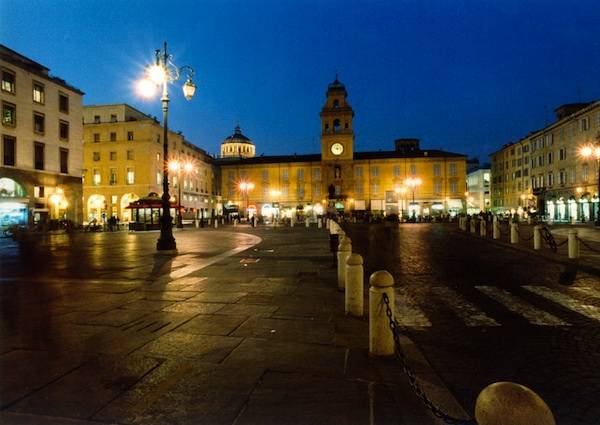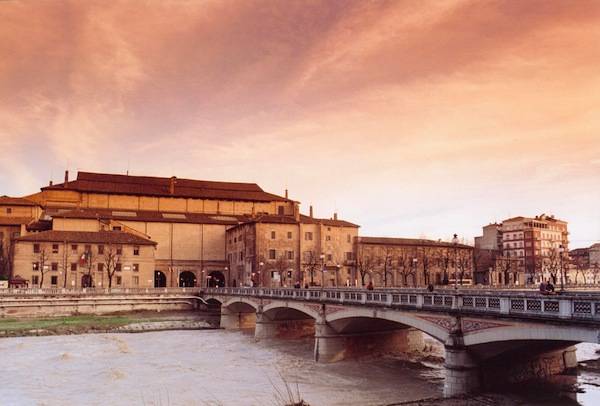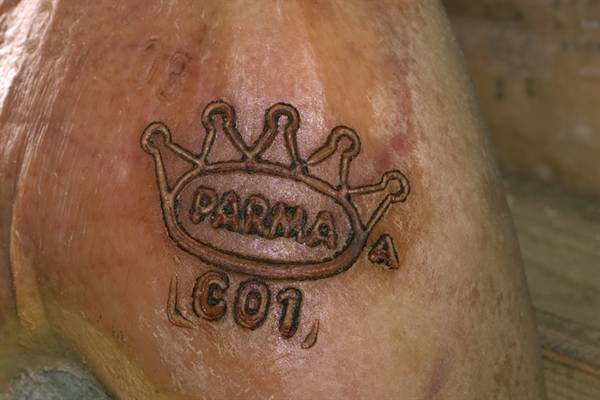Tasty Tourism: Destination Parma and the Prosciutto di Parma Museum
“Parma proudly boasts some of the highest quality food products renowned at both national and international level: Parmigiano-Reggiano, Prosciutto di Parma and various cured pork meat products such as the Culatello from Zibello, Salame from Felino, Coppa, as well as wines from the Parma hills, Porcini mushrooms from the Taro river valley, and Tomatoes,” representatives at the Consorzio del Prosciutto di Parma booth told i-italy during the latest edition of the Summer Fancy Food Show.
And that's no lie, because of its excellent products and savory dishes, Parma is considered by
many the food capital of Italy. Food and Wine tourism is in rapid expansion both in terms of quantity and quality. Italian regions now feature several “Food and Wine Trails,” “Flavor Trails,” and “Wine Trails,” where tourists can enjoy not only the landscape but the delicious products of the area.
Parma also is the corporate headquarters for a number of prestigious food companies such as, for example, Barilla, Parmalat and canning industries, as well as the safeguarding entities for typical products like the Consortium for Prosciutto, the Consortium for Parmigiano-Reggiano and the Consortium for Culatello. The entire Parma economy is positively affected by the growth of the food sector.
When traveling to Parma, food can be enjoyed in the city's restaurants and trattorias but the visit can continue at the Museo del Prosciutto e dei Salumi di Parma (Parma's Prosciutto and Cured Meats Museum). This is not the only food museum in the city. The city's key products are Prosciutto di Parma and cured pork meat products, Parmigiano-Reggiano and Tomatoes, so there is one museum for each sector. Following an in-depth preliminary study, the specific nature of each museum has emerged in order that it may communicate knowledge of their production process.
“The Food Museums not only give added value to the ‘story’ behind the individual products, to the local economy and culture, they also encourage the setting up of a new tourist product, developing existing tourist sites alongside the food and wine trails.
The Museums contribute to the enhancement of the importance of existing Parma typical food production sites, with particular emphasis on those which, because of their history, production process and quality are best suited for inclusion in tourism offers. Such offers interact with the Museums themselves, with programmed events and with the food and wine trails.
The Museums add value to the entire territory through the gastronomical culture, both encouraging growth and awareness amongst local residents, in particular young people, as well as defining the image of the individual typical product and its area and gastronomic tourism,” the museum's site explains.
The organization explains how each museum must be particularly attractive and emotionally involve the visitor, narrate a story and not only show ‘things’, involve all the senses and not just sigh and allow for tasting and purchase of products and related merchandising.
The museum of Prosciutto and cured meat products of Parma proposes a path through history which allows the visitor to re-construct the production process from pig to cured meat, the highly prized products of the art of the Parma masters. Here below in synthesis can be found a museum visit guide used to research the material and documents which can be found in the museum.
The route takes the visitor on a tasty journey. It all starts with an introduction which provides general information on the origins of the production of cured meat products. Then the figure of the pig, the source of prosciutto, is analyzed (the pig in history, in culture and art). Things get more technical when the processing of pork meat is studied. The different steps are slaughtering, salting, preserving.
Traditions are also studies along with terminology. After this general section each product is presented individually by providing identification and description of the production places: Prosciutto from Parma, Culatello from Zibello, Salame from Felino, Coppa from Parma and Shoulder of ham from San Secondo. Focus is then shifted on Prosciutto alone describing the different stages of its production: cutting the haunches, preparing for processing, salting, resting, washing and cleaning, drying, maturing and sealing, testing and branding.
The following steps include an in depth study of production areas, focusing on the role of climate and of machines in the production process, a look at salt and its role in preservation, a gastronomy section focused on the role of Prosciutto in the kitchen, featuring recipes and menus, a documentation area that presents the Consortium (Since 1963 the Consortium of Parma Prosciutto has safeguarded and guaranteed the quality of the King of cured meats, affixing its own seal only to those hams which correspond to the requisites of the rigid regulations) and a tasting area, the latter has been voted the favorite section of many!!!





































i-Italy
Facebook
Google+
This work may not be reproduced, in whole or in part, without prior written permission.
Questo lavoro non può essere riprodotto, in tutto o in parte, senza permesso scritto.